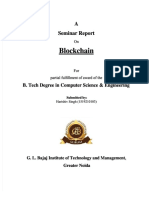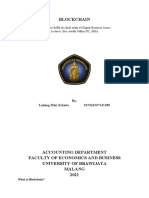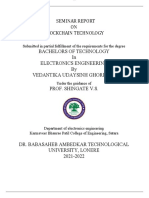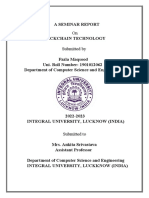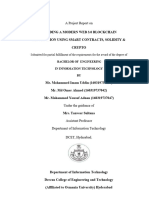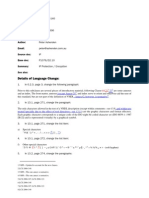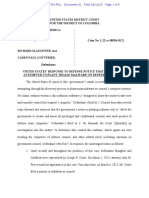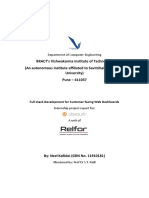0% found this document useful (0 votes)
607 views18 pagesSeminar Report Block
Blockchain is a distributed database that records digital transactions or events in a verifiable way. It uses cryptography to allow each participant on the network to access the same data and add records securely without the need for a centralized authority. Key applications of blockchain technology beyond cryptocurrencies include supply chain management, smart contracts, and healthcare record keeping. The evolution of blockchain began with Bitcoin in 2008, and continued with platforms like Ethereum that expanded its capabilities to develop decentralized applications. Blockchain technology has the potential to transform many industries by facilitating peer-to-peer transactions and automating processes through smart contracts.
Uploaded by
FieldartCopyright
© © All Rights Reserved
We take content rights seriously. If you suspect this is your content, claim it here.
Available Formats
Download as DOCX, PDF, TXT or read online on Scribd
0% found this document useful (0 votes)
607 views18 pagesSeminar Report Block
Blockchain is a distributed database that records digital transactions or events in a verifiable way. It uses cryptography to allow each participant on the network to access the same data and add records securely without the need for a centralized authority. Key applications of blockchain technology beyond cryptocurrencies include supply chain management, smart contracts, and healthcare record keeping. The evolution of blockchain began with Bitcoin in 2008, and continued with platforms like Ethereum that expanded its capabilities to develop decentralized applications. Blockchain technology has the potential to transform many industries by facilitating peer-to-peer transactions and automating processes through smart contracts.
Uploaded by
FieldartCopyright
© © All Rights Reserved
We take content rights seriously. If you suspect this is your content, claim it here.
Available Formats
Download as DOCX, PDF, TXT or read online on Scribd
/ 18
